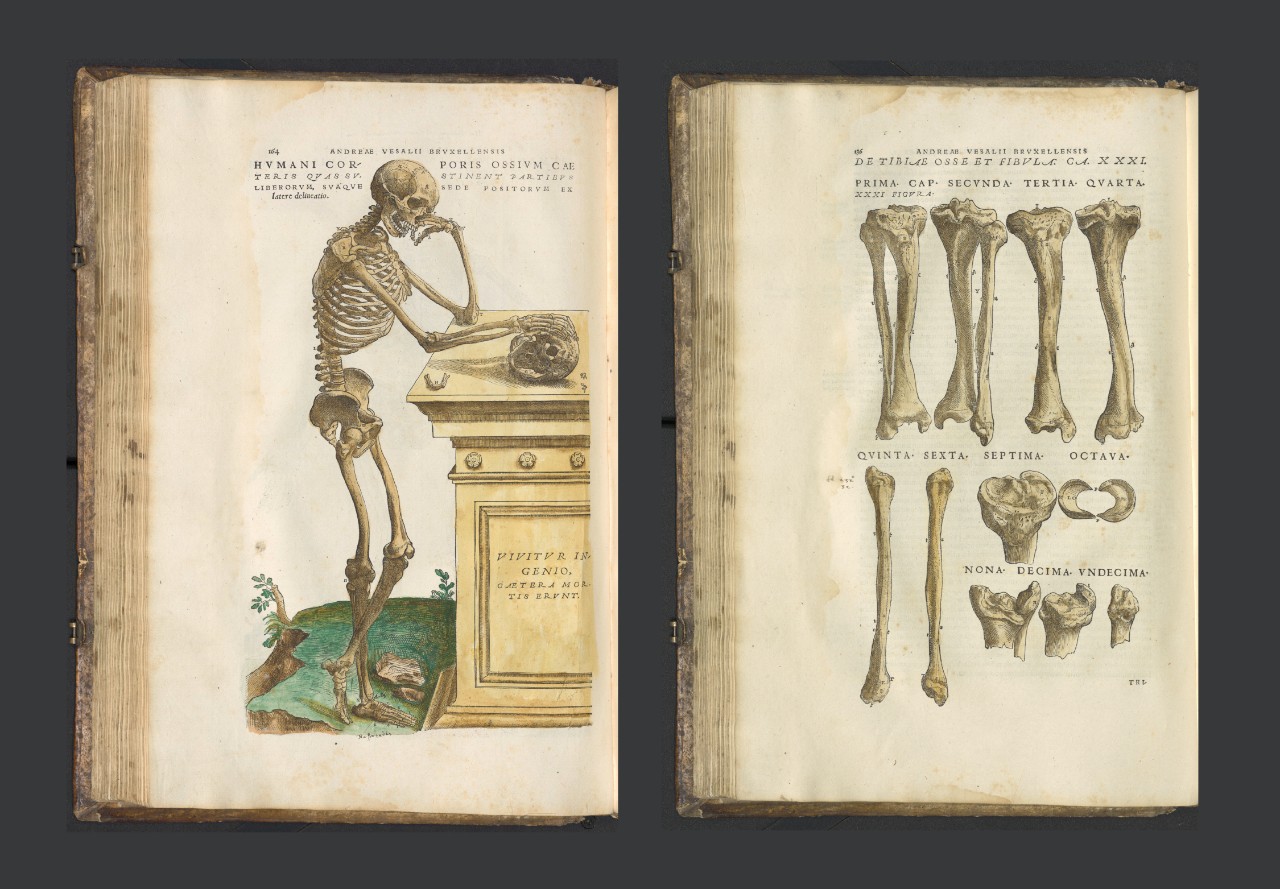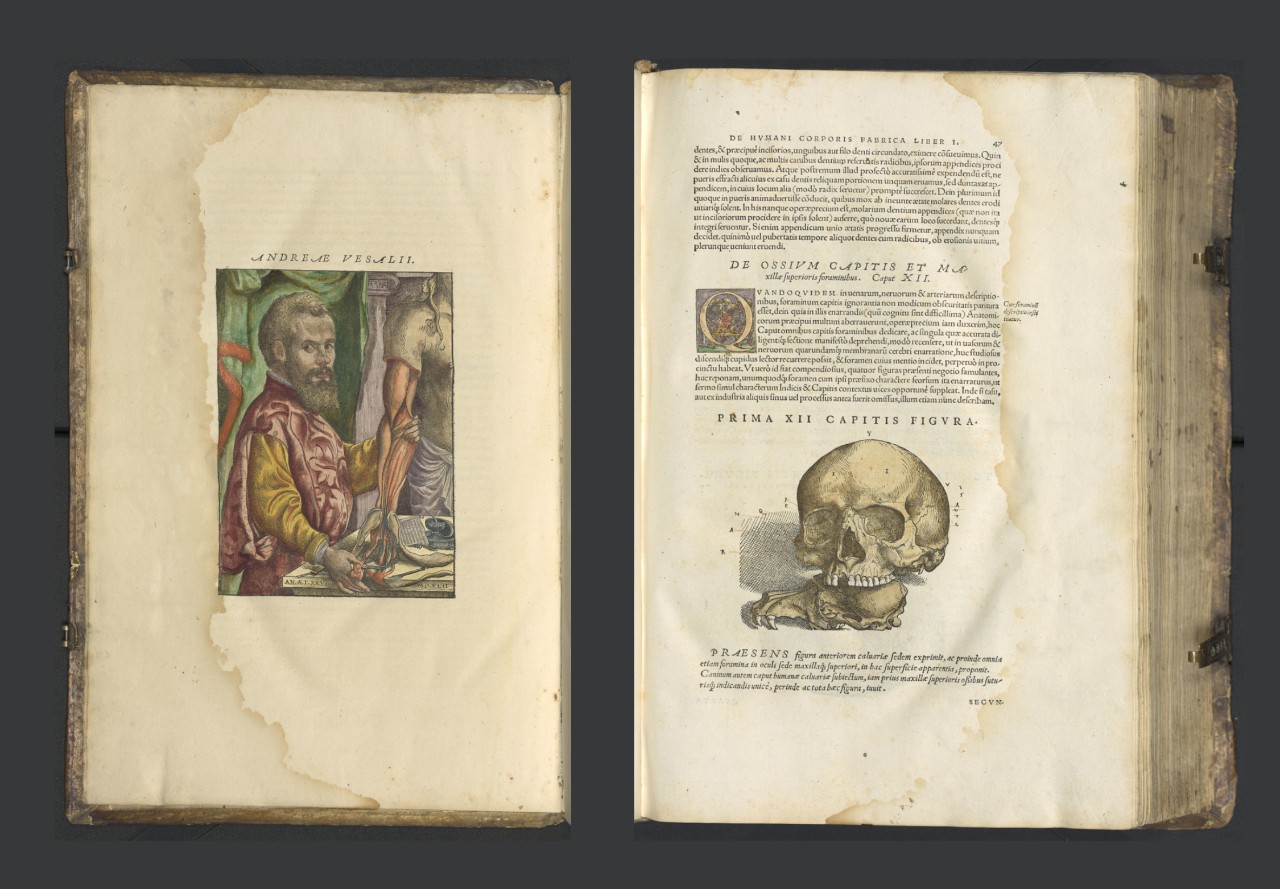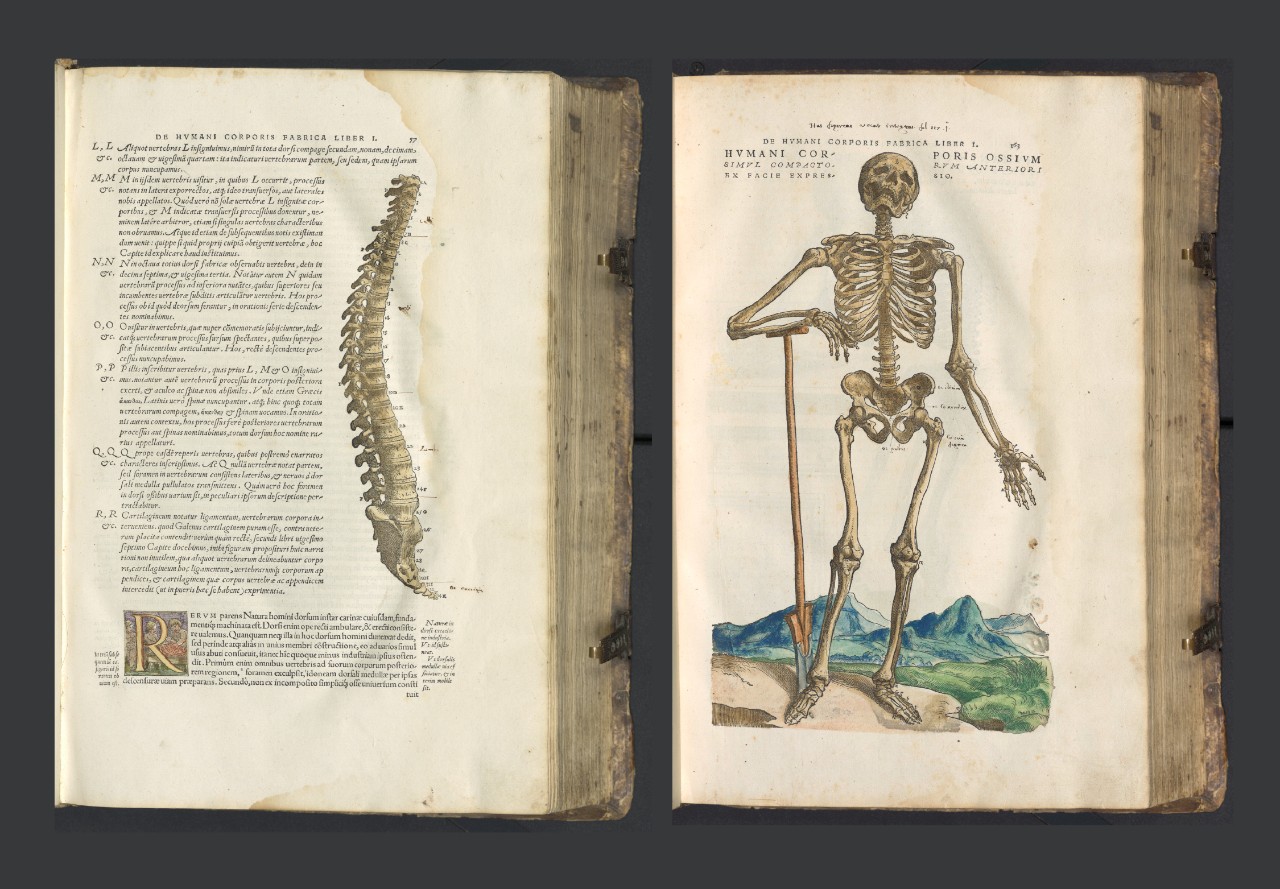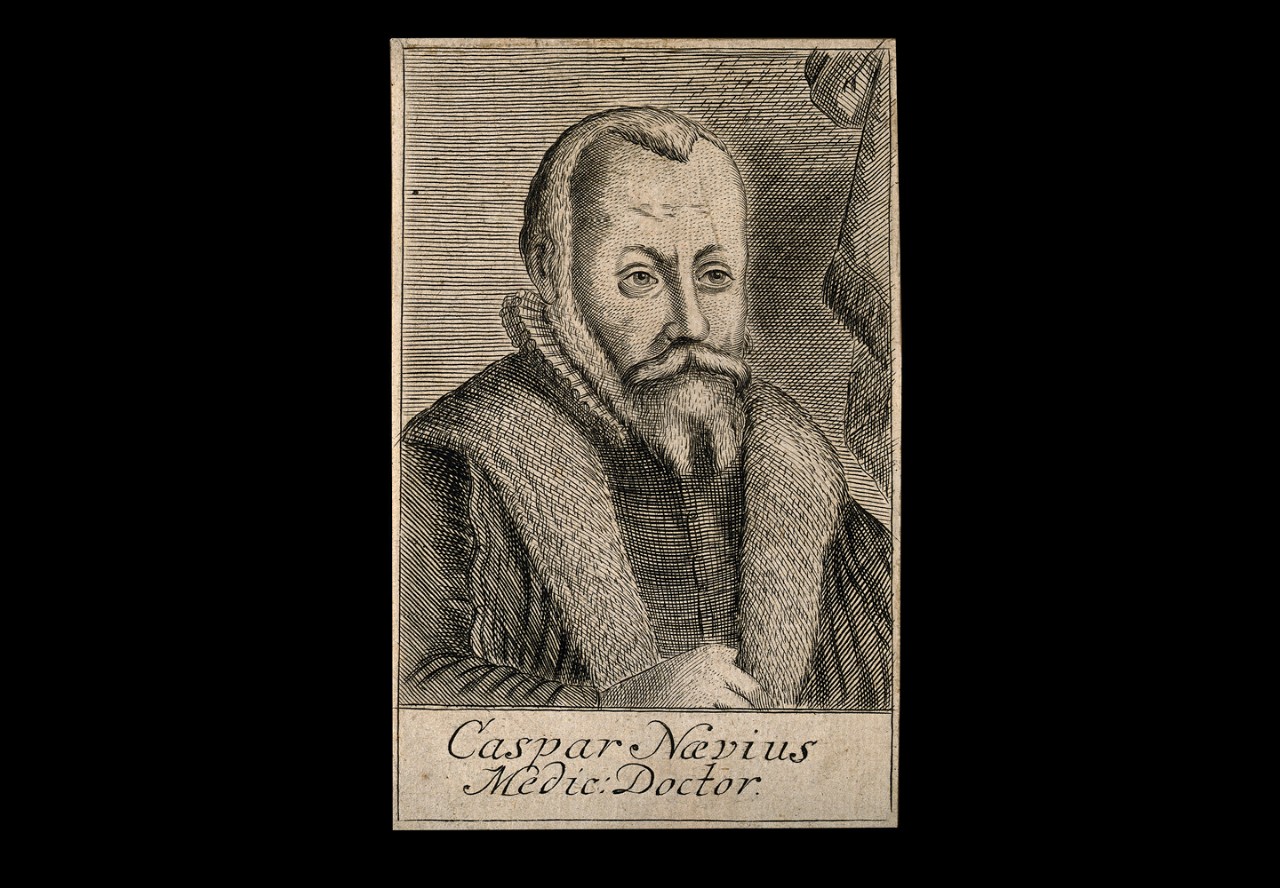Library Acquires Vesalius’ Anatomical Masterpiece

This year marks the 60th anniversary of our much loved Fisher Library. Since opening its doors in 1963, Fisher has been at the heart of the University of Sydney community and has had a profound impact on education, research, and the pursuit of knowledge.
To celebrate this milestone occasion, the Library has acquired a first edition copy of a rare book that is considered by scholars to be one of the most influential works in the history of western medicine, De humani corporis fabrica libri septem (On the Fabric of the Human Body in seven books) by Andreas Vesalius.
Andreas Vesalius, Professor of Anatomy at the University of Padua, was only 29 years old when he published this monumental work in 1543. At this time, the ancient texts of Aristotle and Galen were still standards in the medical schools of Europe, with physicians reading the texts aloud as barber-surgeons performed the dissections on animals.
By taking the revolutionary steps of performing his own dissections – and on the human body – Vesalius discovered errors in the ancient authors’ teachings. The Metropolitan Museum, New York, notes that the Fabrica, “which drew attention to these flaws, initially threatened the academic medical establishment but ultimately won Vesalius admiration and a post as court physician to Charles V, to whom he dedicated the volume.” It is impossible to overestimate the place this book has in medical history as part of the discarding of dogmas and the establishment of scientific observation and thinking.
For these reasons, Vesalius is often referred to as the founder of modern human anatomy, but what is it that makes this book so enduring and important? Associate Professor Catherine Storey explains:
“This was a revolutionary masterpiece of anatomical art and science, which epitomised the spirit of the Renaissance. Vesalius turned the practice of anatomy from a simple repetition of facts, laid down by Galen in antiquity and unchanged for centuries, to an enquiring science. He recognised the power of illustration and used art to best advantage to ensure the reader engaged with the text.”
He employed an exceptional artist, Jan Stefan van Kalkar from the school of Titian, to bring Vesalius’ own anatomical dissections ‘to life’. These prints were meticulously engraved on woodblocks and expertly printed by Oporinus in Basel. The Metropolitan Museum observes that, “no text on anatomy before the Fabrica had ever been illustrated so completely or so well, and although the plates are didactic in intent, they are also rich in aesthetic merit.”
The iconic series of fourteen ‘muscle men’ in the Fabrica shows the human body in various states of dissection, often depicted in allegorical poses. In many instances, layers of tissue artfully fall away to reveal the muscles and ligaments which lie beneath. The figures pose in front of landscape backgrounds that have been identified as joining up to depict a panorama in the Euganean hills near Venice and Padua, Italy. Storey states:
“The final product became the benchmark for all future anatomical illustration, that few anatomists have challenged. The illustrations are still recognised today for their extraordinary beauty. This work of genius is a true milestone of medical history.’’
In its original 16th century binding, our copy features extensive annotations throughout from the first owner, German physician Caspar Neefe. Neefe, who later served as personal physician to Duke Albert I of Saxony, acquired the precious volume only a year after its publication and obviously consulted it extensively throughout his career as a medical practitioner, and all woodcut illustrations and decorated initials up to page 165 are in full contemporary hand colour.
Julie Sommerfeldt, Manager of Rare Books and Special Collections (RBSC) at the Library summarises:
“This is a unique opportunity to obtain a fine first edition of this seminal work. Vesalius’ magnificent illustrations of the human body have influenced medical and surgical teaching and practice for hundreds of years. This book takes its place as a pivotal item in Rare Books and Special Collections, alongside our annotated first edition copy of Isaac Newton’s Principia, as seminal works in the fields of Medicine and Science.The copy-specific features of this book plus the extensive hand annotations by the physician who first owned it bring enormous potential for original research, and opportunities for using this book in educational and outreach activities are enduring. It is an extraordinary and noteworthy asset to the University’s cultural heritage collections.”
Like many other significant items in our collection, this acquisition was enabled by the generosity of our
benefactors. We would like to acknowledge the Margaret Lundie Fund, and the B & A Osborn Book Fund, for making this purchase possible.
The book has been digitised and is available to view through the Library’s Digital Collections. You can also book a Virtual Reading Room (VRR) session with a Librarian to browse the item in real time over Zoom. Details on how to view the physical item in the RBSC Reading Room are on our website.


